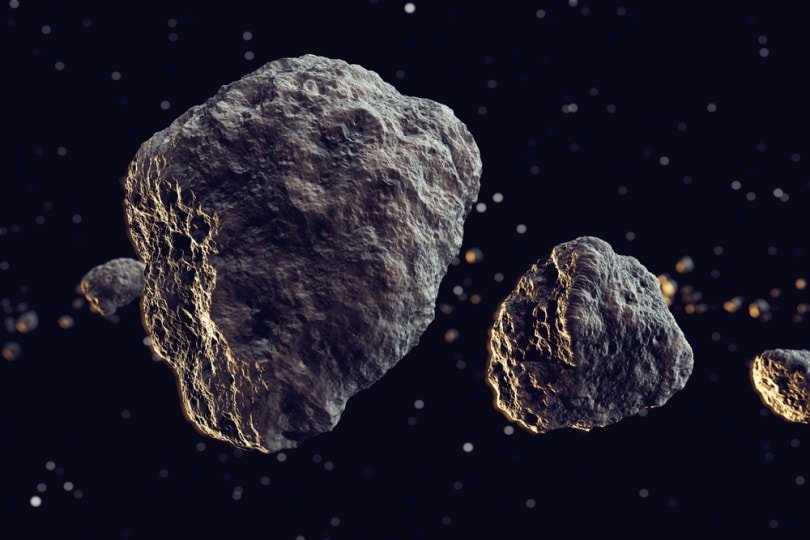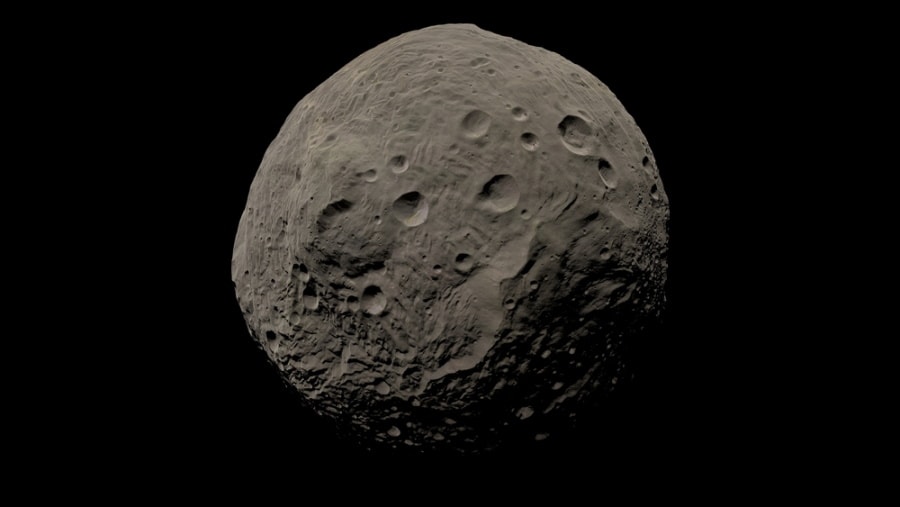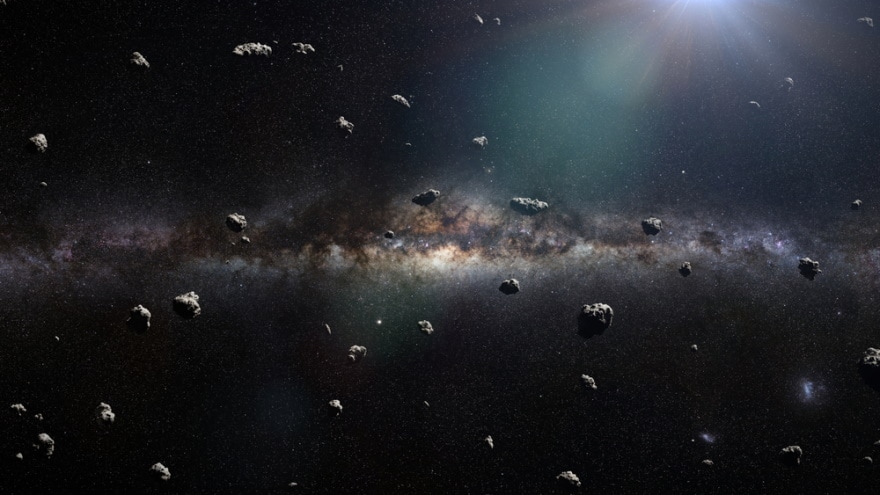How Fast Do Asteroids Travel? What You Need to Know
Last Updated on

Asteroids were formed approximately 4.6 billion years ago at the same time as the rest of our Solar System. They are essentially pieces of rock and other materials, including some metal and clay, and they are not uniform in size or shape, although larger asteroids do tend to be more spherical than smaller objects. Although the majority reside in the main asteroid belt between Jupiter and Mars, others can be found following the same orbital paths as planets. Those that are close to Earth’s orbit are known as near-Earth asteroids.

What Are Asteroids?
When the Solar System was formed 4.6 billion years ago, the same implosion that led to the formation of the Sun and planets also left behind smaller pieces of rock and other debris. These pieces are what we know as asteroids.
Initially, the formation of Jupiter prevented these pieces from fusing to form planets, and most have been held in the main asteroid belt that falls roughly between Jupiter and Mars. Over time, some of these asteroids have been bumped out of the main asteroid belt to orbit the Sun in the orbital path of other planets.

How Fast Do Asteroids Travel?
The speed an asteroid travels is primarily determined by its distance from the Sun. Those that are closer to the Sun travel faster, but even the slowest asteroids or those furthest from the Sun achieve speeds equivalent to 25 kilometers per second, or roughly 90,000 kilometers per hour.
The fastest asteroids, which are those that are closest to the sun, can travel at speeds of 30 kilometers per second, which is nearly 110,000 kilometers per hour. A commercial plane typically flies at speeds of around 900 kilometers per hour, which means that asteroids can travel at speeds 100–125 times greater than a plane.
How Fast Can a Meteor Go?
A meteor is actually the flash of light that is created when a piece of rock or debris burns up in Earth’s atmosphere. They are not the same as meteorites, which are pieces of rock that survive the trip through the atmosphere and touch down on the surface of the planet. Meteors can travel even faster than asteroids, reaching speeds of up to 70 kilometers per second.

What Is the Largest Asteroid in Space?
The largest asteroid in space is Ceres, which is part of the main asteroid belt. It is roughly spherical in shape and approximately a quarter of the size of the moon. It was discovered in 1801 by Giuseppe Piazzi as he looked for a planet that was believed to exist between Jupiter and Mars. Ceres is classified as a dwarf planet.
How Fast Is the Fastest Meteorite?
A meteorite is a piece of rock or other debris that has successfully passed through Earth’s atmosphere and hit the ground. The fastest recorded meteorite was called Sutter’s Mill and touched down in 2012. Sutter’s Mill landed in Sierra Nevada, California, and it reached a speed of 28.6 kilometers per second. It is estimated to have been between 6.6–13.1 feet in diameter, equivalent to the size of a washing machine or minivan.


Conclusion
Asteroids have been around for 4.6 billion years ago and were formed, along with the rest of the Solar System, following a massive implosion of gas and dust. Most are found in the main asteroid belt between Jupiter and Mars, but some have been pushed away from this region to follow the orbital paths of planets. Those that are closest to the Sun travel quickest, reaching speeds of up to 30 kilometers per second, with most achieving speeds of 25 kilometers per second.
Featured Image Credit: Dabarti CGI, Shutterstock
About the Author Robert Sparks
Robert’s obsession with all things optical started early in life, when his optician father would bring home prototypes for Robert to play with. Nowadays, Robert is dedicated to helping others find the right optics for their needs. His hobbies include astronomy, astrophysics, and model building. Originally from Newark, NJ, he resides in Santa Fe, New Mexico, where the nighttime skies are filled with glittering stars.
Related Articles:
Can You Use Binoculars to Look At Stars? How to Choose the Right Pair
How to Clean a Refractor Telescope: Step-by-Step Guide
How to Clean a Telescope Eyepiece: Step-by-Step Guide
How to Clean a Rifle Scope: 8 Expert Tips
Monocular vs Telescope: Differences Explained (With Pictures)
What Is a Monocular Used For? 8 Common Functions
How to Clean a Telescope Mirror: 8 Expert Tips
Brightfield vs Phase Contrast Microscopy: The Differences Explained
